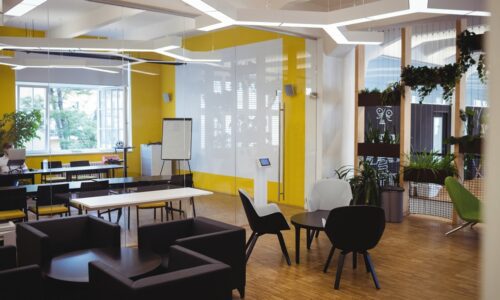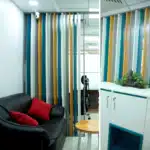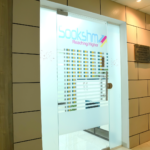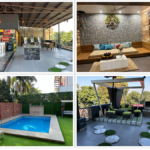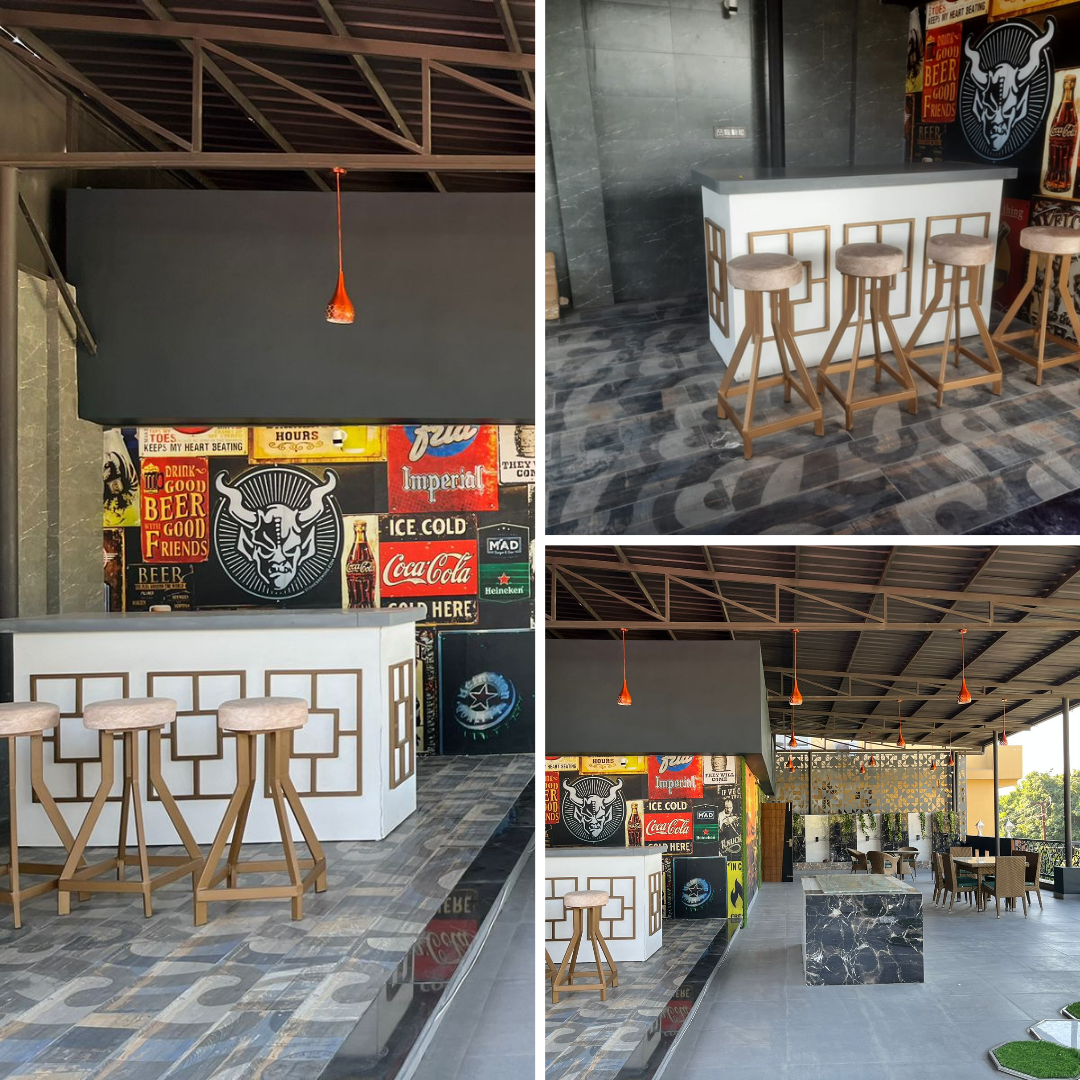Designing for Desk Sharing: Hot-Desking Strategies for Office
- Amodini Systems
- 0 Comments
Hot-desking is a modern office design strategy where employees do not have assigned desks. Instead, they can sit at any available workstation when they come to work. This flexible seating system is designed to improve collaboration, reduce office space costs, and promote a dynamic work culture.
The idea behind hot-desking is simple — since not all employees are in the office at the same time (due to remote work, meetings, or flexible hours), companies can save space and resources by sharing desks among workers. It also supports hybrid work environments, where employees split their time between home and the office.
However, while hot-desking can bring many benefits, it requires careful planning, smart office design, and clear strategies to ensure it works effectively.
Why Companies Are Choosing Desk Sharing
Many businesses are moving toward flexible work models after realizing that traditional office setups are often underutilized. Studies show that nearly 40% of desks in conventional offices remain empty during working hours.
Hot-desking helps businesses optimize their office space by using it more efficiently. Instead of maintaining desks that stay empty for most of the day, companies can redesign their offices for better flexibility and collaboration.
Below are some common reasons why organizations are adopting desk-sharing strategies:
-
Cost Efficiency: Reduces the need for large office spaces, saving rent and maintenance costs.
-
Flexibility: Adapts easily to changing team sizes and work patterns.
-
Collaboration: Encourages interaction between different departments and teams.
-
Modern Work Culture: Supports hybrid and remote work arrangements.
Designing the Office for Hot-Desking
Creating an office for desk sharing is not just about removing assigned desks. It’s about designing a space that supports comfort, productivity, and organization. A well-designed hot-desking office should make it easy for employees to find a spot to work, access the tools they need, and collaborate when required.
Here are some important design principles for successful desk sharing:
1. Flexible Workstations
Each desk should have similar facilities such as comfortable chairs, monitors, power outlets, and internet access. Standardizing workstations ensures that employees can work efficiently regardless of where they sit.
2. Technology Integration
Hot-desking requires the right technology to work smoothly. Employees should be able to easily connect their laptops, book desks through digital systems, and access shared files.
Some companies use desk booking software that allows employees to reserve a seat in advance. This reduces confusion and ensures that everyone finds a workspace when they arrive.
3. Storage Solutions
Since employees do not have personal desks, storage becomes a major concern. Providing lockers or personal storage units helps workers store their items safely during the day. This also keeps the office organized and clutter-free.
4. Zones for Different Tasks
Office design should include different zones — such as quiet areas for focused work, collaboration zones for team meetings, and lounge spaces for relaxation. This helps employees choose the best environment depending on their tasks.
5. Comfort and Ergonomics
Hot-desking offices should prioritize comfort. Adjustable chairs, good lighting, and ergonomic setups prevent discomfort and improve employee well-being.
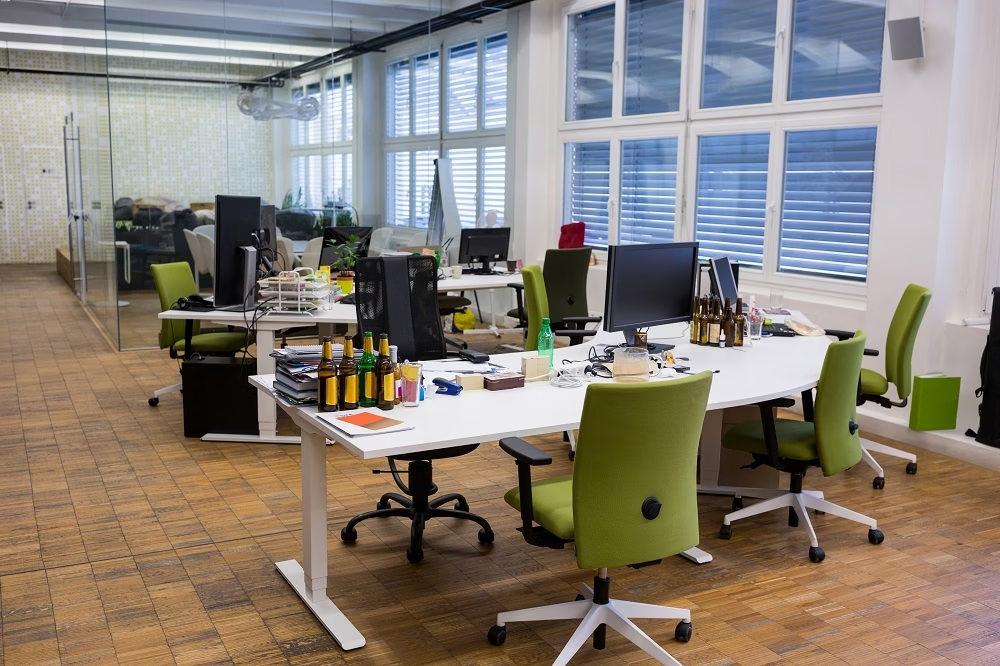
Key Benefits of Hot-Desking
When implemented properly, hot-desking brings several advantages to organizations. Let’s look at some key benefits:
| Benefit | Description |
|---|---|
| Space Optimization | Reduces unused workspace and allows companies to design smaller, more efficient offices. |
| Cost Savings | Minimizes real estate and maintenance expenses. |
| Flexibility | Adapts to hybrid and remote work models easily. |
| Employee Collaboration | Encourages teamwork and cross-department interaction. |
| Modern Work Image | Projects a progressive and tech-savvy company culture. |
These benefits show why many companies — especially startups, tech firms, and creative agencies — are turning to desk-sharing as part of their workspace strategy.
Common Challenges in Desk Sharing
Despite its advantages, hot-desking can create challenges if not managed correctly. It’s important to understand these issues early and plan solutions in the design and management phase.
-
Lack of Personal Space: Employees may feel less connected to the office when they don’t have a personal desk.
-
Hygiene and Cleanliness: Shared desks can become messy if not maintained properly.
-
Technology Setup Issues: Constantly connecting devices and finding available equipment can slow down work.
-
Booking Conflicts: Without an organized system, employees may waste time looking for free desks.
To overcome these problems, offices should include cleaning schedules, desk booking tools, and clear policies that define how the space should be used.
Strategies for Successful Hot-Desking
Designing for desk sharing is not just about physical setup — it also involves management strategies and employee engagement. Below are key strategies that make hot-desking successful.
1. Implement a Desk Booking System
A digital desk booking system helps employees reserve their workstations in advance. It prevents overcrowding and ensures fair access to workspaces. Many organizations use software that integrates with calendars or mobile apps for easy desk reservations.
2. Encourage Clean Desk Policies
A clean desk policy ensures that everyone leaves their workspace tidy after use. This keeps the environment hygienic and pleasant for the next person. Providing cleaning supplies and quick reminders can help maintain this habit.
3. Communicate Clear Guidelines
Employees should understand how to use the hot-desking system. Clear instructions about booking, storage, and desk etiquette help avoid confusion and maintain smooth operations.
4. Offer Variety of Spaces
Not every task requires the same type of environment. Include different work zones — open areas for teamwork, quiet rooms for focus, and lounges for relaxation. This allows employees to choose the right setting for their needs.
5. Monitor Usage and Gather Feedback
Regularly track how workspaces are being used and collect feedback from employees. This helps improve the layout, policies, and technology to better suit real needs.
How to Make Employees Comfortable with Desk Sharing
Transitioning from assigned seating to hot-desking can be challenging for employees. Some may feel uncertain or uncomfortable with the change. To make the process smoother:
-
Involve Employees in the Design Process: Let them share their ideas and preferences.
-
Provide Personal Lockers: This gives them a sense of personal space.
-
Ensure Reliable Technology: Make sure connectivity and equipment are easily accessible.
-
Maintain Cleanliness: A clean workspace builds trust and comfort.
-
Create a Friendly Environment: Encourage openness, collaboration, and respect among employees.
When employees feel that their needs are respected, they are more likely to accept and even enjoy the flexibility of desk sharing.

The Future of Hot-Desking
With the growth of hybrid work models, hot-desking is expected to become even more common. Modern offices are focusing on creating flexible, technology-driven environments that support both remote and in-office employees.
Companies are investing in smart office solutions, such as sensors to track desk usage, real-time availability maps, and AI-based space optimization tools. These technologies help make hot-desking more efficient and convenient for everyone.
The goal is not just to reduce space but to build a more connected, productive, and adaptable workplace.
Conclusion:
Designing for desk sharing is about creating a workspace that balances flexibility, comfort, and efficiency. Hot-desking can transform traditional offices into dynamic, collaborative environments when done thoughtfully.
By combining smart office design, digital tools, and employee-friendly policies, organizations can turn shared workspaces into productive and enjoyable places to work.
Hot-desking is not just a trend — it’s a reflection of how modern businesses are evolving to meet the needs of a flexible, mobile workforce.

